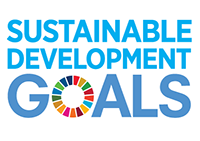Opioid Poisoning Hospitalizations
Definition:
Crude rate of significant opioid poisoning hospitalizations per 100,000 population.
Methods and Limitations:
Canada is in the midst of an opioid crisis. A new CIHI analysis shows that opioid poisoning hospitalization rates continue to increase across Canada. Communities with populations between 50,000 and 99,999 are hardest hit, experiencing the highest per capita hospitalization rates in the country.
An opioid poisoning occurs when an opioid is taken incorrectly and results in harm.
The Hospital Morbidity Database (HMDB) captures administrative, clinical and demographic information on inpatient separations (referred to here as “hospitalizations”) from acute care hospitals. Hospitals in all provinces and territories (except Quebec) submit data directly to CIHI. Quebec data is submitted by the ministère de la Santé et des Services sociaux du Québec.
Hospitalizations are presented by the census metropolitan area of the patient.
The coding of diagnoses using ICD-10-CA is based on documentation on the patient’s chart by the physician or primary care provider. Deficiencies in chart documentation and/or failure to provide coders with appropriate documents can affect data quality and lead to under-reporting.
Significant diagnoses are defined as opioid poisoning hospitalizations with a diagnosis type of (M), (1), (2), (W), (X), (Y) or (C). Data excludes suspected opioid poisoning hospitalizations.
The direct standardization process was used with the 2011 Canadian population as the standard population.
The data in this analysis includes only opioid harms for which an individual was admitted to hospital (or to the ED in Ontario, Alberta and Yukon) and does not capture cases that received treatment in other environments. Therefore, these figures represent an underestimate of the extent of opioid harms in Canada; the magnitude of this underestimation is unknown.
Coding and reporting practices may change over time due to factors such as education and policy changes. This should be taken into consideration when interpreting time trends.
To calculate standardized rates, the direct standardization process was used with the 2011 Canadian population as the reference year.
2017 population numbers (the most recent year of data available) were used to calculate crude rates for 2018.
Facility postal codes were used for the provincial/territorial analysis, and patient postal codes were used for the local-level analysis (CMA and CSD).
Source(s):
Hospital Morbidity Database, Canadian Institute for Health Information.

 Opioid Poisoning Hospitalizations in the Sustainable Development Goals
Opioid Poisoning Hospitalizations in the Sustainable Development Goals
Click on the SDG to reveal more information
3. Ensure healthy lives and promote well-being for all at all ages
Ensuring healthy lives and promoting the well-being for all at all ages is essential to sustainable development. Significant strides have been made in increasing life expectancy and reducing some of the common killers associated with child and maternal mortality. Major progress has been made on increasing access to clean water and sanitation, reducing malaria, tuberculosis, polio and the spread of HIV/AIDS. However, many more efforts are needed to fully eradicate a wide range of diseases and address many different persistent and emerging health issues.

